The animal kingdom has always been an area of curiosity and exciting new findings. From large elephants to tiny beetles, there are numerous species across the globe, and numerous are yet to be explored. Among them is our area of interest, animals that start with D! It might surprise you that their list is as long as 40, but there are so many more.
And if that’s the case, imagine how many animals there would be starting with a, b, c, and z! Amazing right? If you are more curious, you can learn about them from different books!
Here are 40 of the common and rare animals that start with D!
1. Dog

Who doesn’t like dogs, right? Well, they, too, love us, thus earning the title of being human beings’ best friends. Due to this, dogs were one of the first species to be domesticated by humans, the early hunter-gatherers.
Dogs are famous for their strong sense of scent and sound. Ever heard a dog barking at something out of nowhere? That’s probably because they heard a too small sound for our ears. Their strong ability to identify scent is why dogs are trained to help the cops.
There are approximately 400 separate breeds of purebred dogs worldwide, including poodles, dalmatians, Labradors, and golden retrievers.
2. Duck

Have you seen those cute little ducklings and their mom going about their day in the water? Ducks are one of the birds that spend a lot of time in the water, called a waterfowl. To help with this, they have waterproof feathers and webbed feet. Like any other bird, male ducks have more colorful feathers than females.
You would be surprised to know these birds live worldwide except in Antarctica. They live near rivers, ponds, lakes, and streams. They sometimes sleep in a nest made of tall grass near a body of water. Other times, they sleep while floating on the water! Yes, you heard that right. Ducks can even sleep with one eye closed.
3. Dove
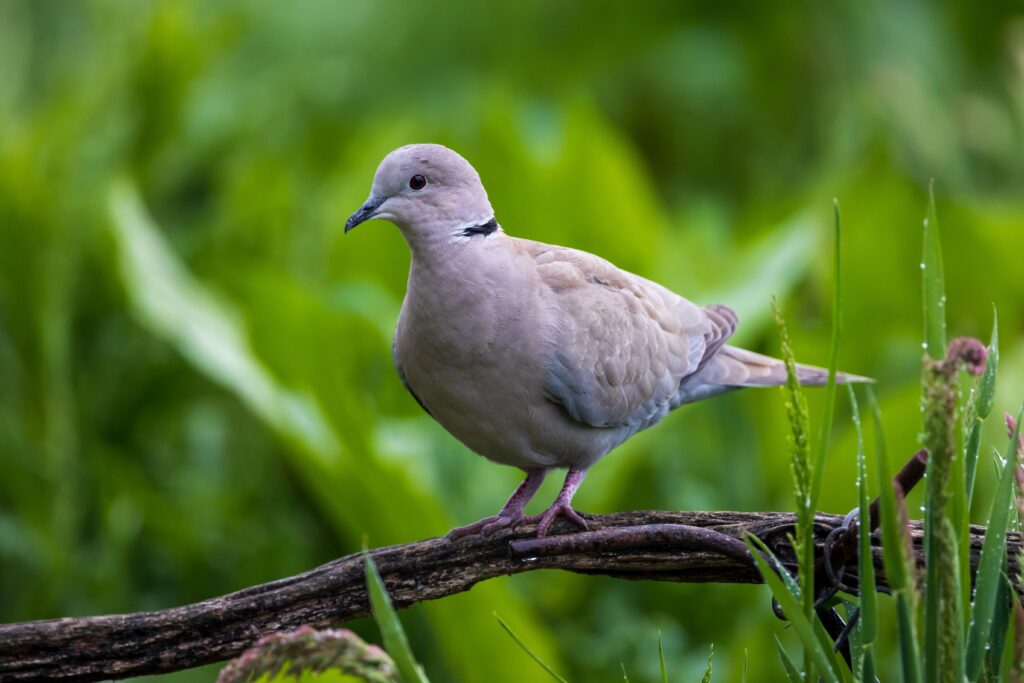
Many confuse doves with pigeons, different birds from the same family. Even the doves of peace we usually see in pictures are rock doves, which are pigeons.
Doves build their nest using sticks and other debris, often flimsy on a tree branch. They commonly lay one to two eggs at a time, and the parent dove takes care of its kids until they are mature enough to fetch for themselves. This might take 25-32 days.
4. Dragonfly

Everyone would have seen these pretty insects flying around a park or a garden in various sizes and colors. And there is a reason. There are approximately 7,000 species of true dragonflies. The largest dragonfly species in the world can reach more than 5 inches in length!
An adult dragonfly measures 1 to 5 inches long and weighs less than 1 ounce. They have 6 legs and 2 pairs of wings. The wing can be as long as 6 inches. Each fly’s color depends on what type it is. They can be brown, blue, yellow, green, or red.
5. Dolphin
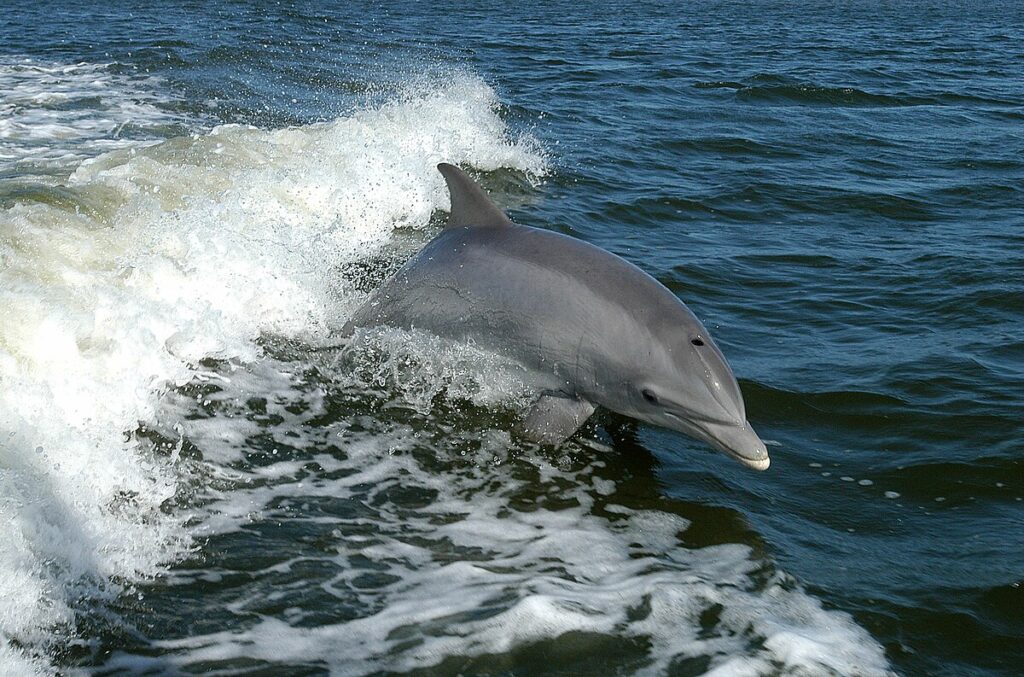
One of the most adorable members of aquatic animals that start with D, dolphins are not just beauty. They are incredibly smart, too. With effective communication using ultrasonic pulses and long memory, dolphins are studied by scientists all around the world.
One of the most seen pictures of dolphins shows them smiling. Well, it is a misconception. Bottlenose dolphins, the type seen in these pictures, have specific facial features that make them look like that even though they are not smiling.
6. Donkey
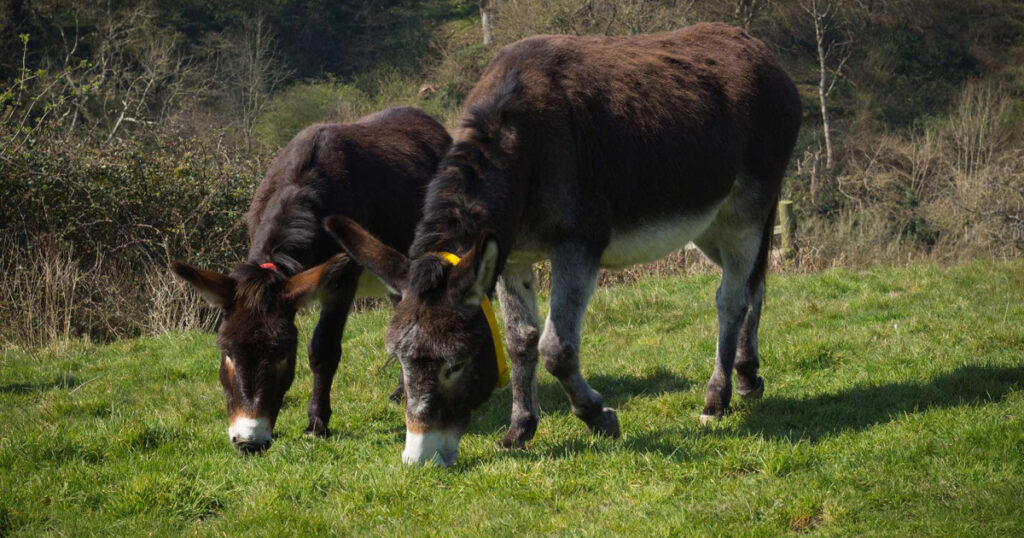
Also called Burro, these animals belong to the horse family. Even Though that might not always have been obvious, their tale has long hairs only at the end, more cow-like than a horse. Although slower than horses, donkeys are sure-footed and can carry heavy loads over rough terrain.
Despite contributing much to society, they are depicted as not so smart in stories and cultures. But contrary to popular belief, donkeys are intelligent creatures with exceptional memories. They can even recall people and animals they haven’t seen in years. Donkeys are friendly and can form strong bonds with other donkeys within a herd and even become best of friends. Donkeys help other donkeys if they become disabled, like blind or lame.
7. Deer

Found mainly in Dense forests and planted areas, these beautiful animals that start with D are present in more than 40 different varieties, including Disney’s “Bambi,” which was modeled after the white-tailed deer. The moose is the largest species of deer.
Deers are long-legged mammals with coats of brown, grey, or red. Only male deers commonly have antlers, except in reindeer, which is the species of deers where the females have antlers.
8. Dwarf Crocodile

The Dwarf Crocodile is the smallest species of crocodile natively found in the rainforests of West Africa. They can be identified by their short, broad snout and tough scales that cover their entire black body (most crocodiles do not have such armored scales on their underside).
Their eyes and nostrils are located on the top of their heads to enable the Dwarf Crocodile to both see and breathe while the rest of its body is under the water.
Dwarf Crocodiles tend to be found in slow-moving rivers in dense rainforest areas along with swamps, permanent pools of water, and seasonal floodplains. West Africa, including Angola, Cameroon, Congo, Gambia, Ghana, Guinea, Liberia, Nigeria, Senegal, and Sierra Leone, has a varying population of these animals.
9. Darwin’s Fox
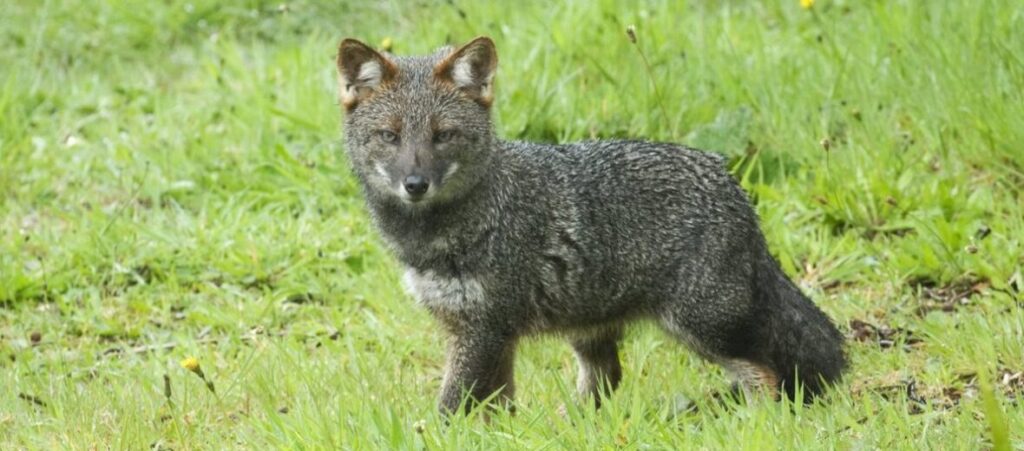
Darwin’s Fox is one of the world’s littlest foxes covered with soft black or grey fur with a hint of red around their legs and ears.
This animal is called Darwin’s fox because it was first collected by Charles Darwin in 1834. Its native name is Zorro Chilote, which means “the fox from Chiloté Island” off the coast of Chile.
Only around 1000 members are left, making Darwin’s foxes among one of the endangered species. This might be due to many factors like habitat destruction as it is converted into farmlands, disease, etc.
10. Darwin’s Frog
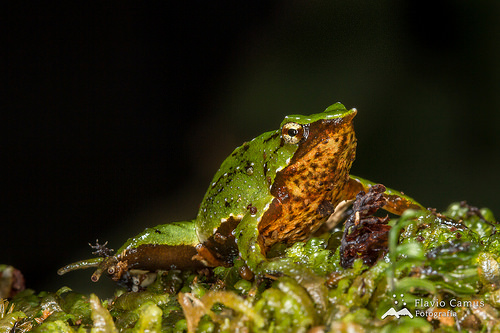
This tiny frog species that only grows up to 1.4 inches in length gets its name after the explorer Charles Darwin. He discovered the frog during his famous “Voyage of the Beagle” from February 1832 to September 1835. Darwin’s Frogs live in the meadows and forests of Chile and Argentina.
Darwin’s frog can camouflage itself on the forest floor, looking like a dead leaf, hence avoiding its predator or sneaking up on prey. Each frog’s body print and colors work much like a fingerprint for humans. No two frogs have the same patterned appearance!
One of the most interesting facts about them is that male Darwin’s frogs carry hatchling tadpoles in their vocal sac for about 50 to 70 days after the eggs hatch in there. During this time, the father frog nourishes the sac’s fluids.
11. Dipper
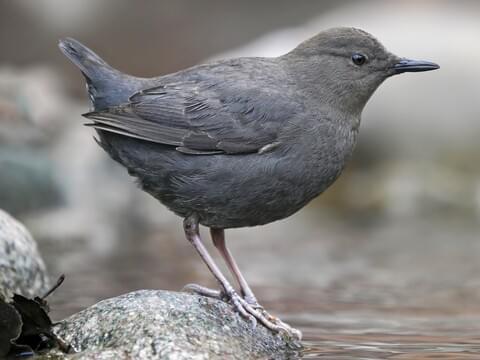
The dipper is a short-tailed, chocolate-brown bird with a white throat and chest. It is remarkable in its method of walking into and under water in search of food. Their meals include insect larvae and freshwater shrimps.
The dipper can be found along fast-flowing rivers, mainly upland areas and lowland rivers in SW England. Dippers have a special trait, a third, transparent eyelid called a ‘nictitating membrane’ that they can close, enabling them to see underwater.
12. Dung Beetle
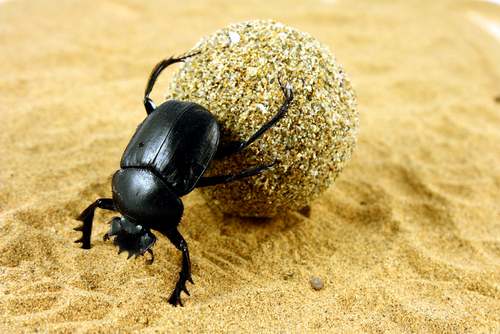
The famous dung rollers of the animals that start with D! Dung beetles are an insect that feeds upon the feces of other animals for supplementation and reproduction. It cleans up the excrement from the environment, controls the fly population, and helps enrich the soil.
Dung beetles are so ancient that they have been around since the dinosaurs. The scarab, a dung beetle of early age, was a major element of ancient Egyptian artwork and jewelry. It seemed to have some associations with Khepri, the god of the rising sun, who was said to roll up the sun over the horizon daily.
13. Dodo
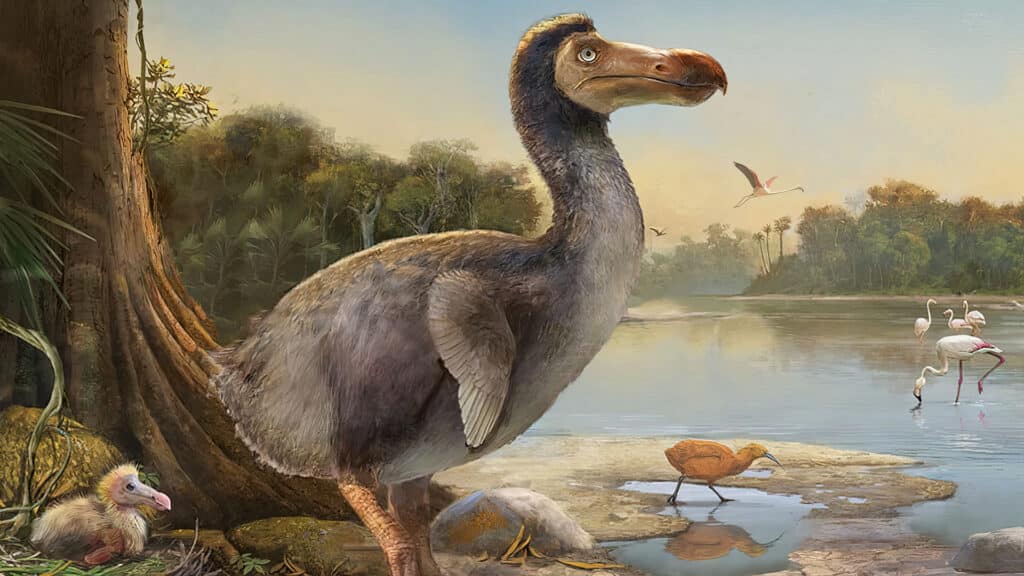
Dodos are the famously extinct species and were among the flightless category. Dodos are often depicted as clumsy and unintelligent. However, having been found only in 1598 by European sailors and becoming extinct within 90 years, there wasn’t much study or data available to conclude their characteristics.
The dodo is said to have built its nest on the ground and surrounded it with grass, making them very vulnerable to feral mammals introduced to the island by European sailors when they first came in. Dodos more than likely only laid one egg at a time, so each egg lost to predators would be devastating for the population.
14. Discus
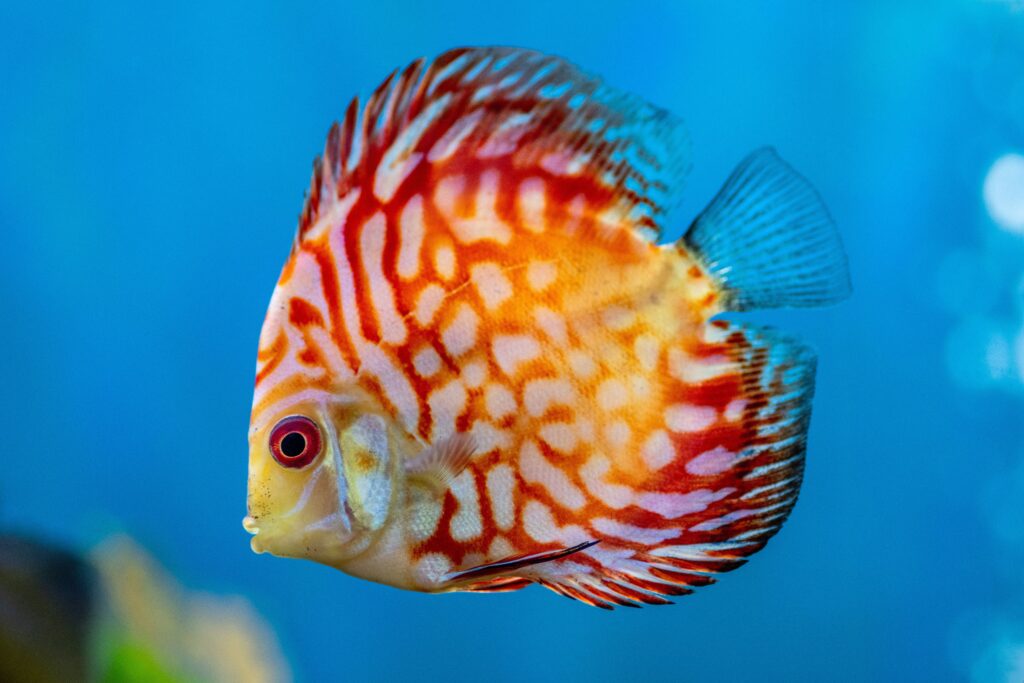
These fishes are called the “King of the Aquarium” because of their bright colors. They got the name Discus because of their flat and rounded body. Large, prominent fins protrude dorsally and on the rear of the fish. They are even classified according to coloration: blue, red, or green.
Also known as Symphysodon, this is a genus of brightly colored tropical fish (and a member of the cichlid family). These fish mainly reside in the long, sinewy waterways of the Amazon Basin. Because of their vivid colors and intricate markings, the discus is one of the world’s most popular tropical aquarium fish. They have undergone selective breeding for unique types of exotic markings and patterns, many of which don’t exist in the wild.
15. Desert Locust
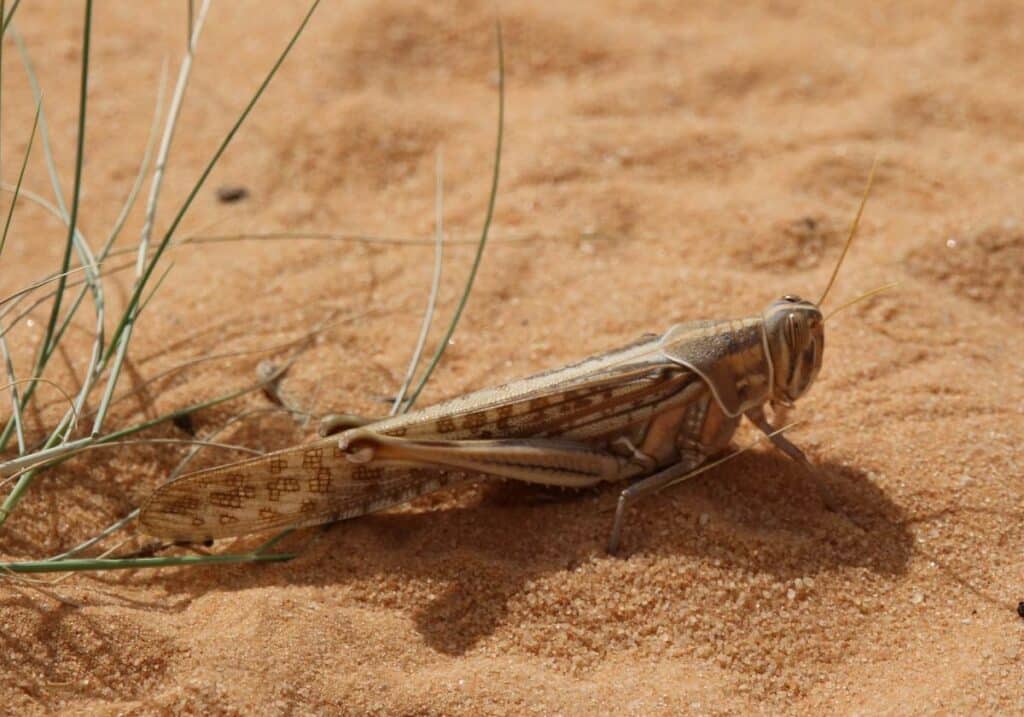
The desert locust has lived in the dry parts of the world for as long as we can remember. These hardy insects eat food equal to their body weight every single day. When they are alone, desert locusts look like harmless grasshoppers.
But when they start to swarm, these locusts can become a consuming force that can cause major economic damage to any society. They grow in large numbers and destroy the crops, which pushes farmers into trouble. Even Though a single locus only eats 2 grams, which might seem little, a swarm can eat a large field when in large numbers.
16. Degu

Degu is one of four ratlike South American rodent species, mainly found near the Andes mountains. They have a large head, large eyes, and moderate-sized, hairless ears. They have soft, thick fur and yellowish brown on the underparts. They also have a yellow spot under each eye so you can differentiate them from other rats easily.
Degus are active during the day, especially in the morning and late afternoon. They are colonial, i.e., they live in colonies. And like rodents, they burrow through the underground. But this way, they also create tunnels and well-designed pathways under roots and scrubs. They place piles of sticks, stones, and dung near the burrow openings, meaning the place belongs to them.
17. Dingo
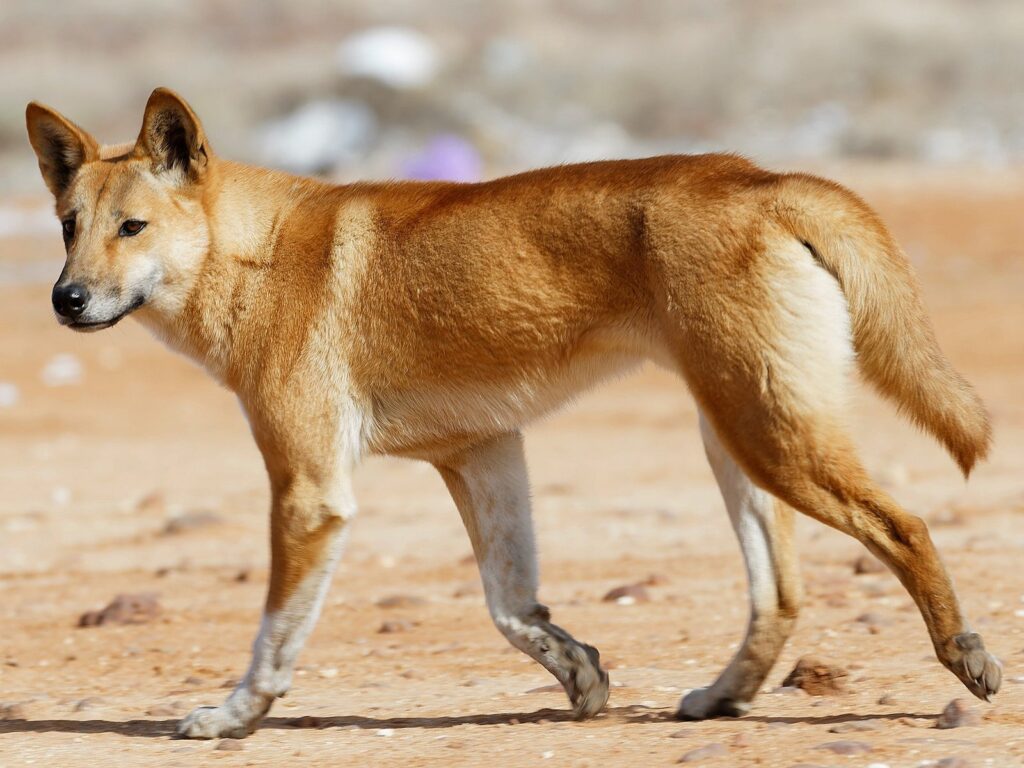
These medium-sized wild dogs are the only canine species native to Australia. Their survival is possible because they are well-adapted to the harsh and diverse climates of Australia and the Pacific region.
They are considered a wild type of dog, but in theory, the hunting style and behavior within a pack is more like a wolf. Dingos can be distinguished from similar animals by their almost fiery red coat color. With their lean appearance, pointed ears, short fur, bushy tail, and long snout, they are almost like small dogs.
18. Dhole

Dholes are also known as the ‘Asiatic Wild Dog’ and are the closest relatives of German shepherds. Even though they were once a wide-ranging wild dog species that covered nearly half the globe today, the dhole is an endangered species with an estimated population of fewer than 2,500 adults.
These wild dogs are carnivores, and they generally hunt deer or sheep. However, there have been recorded instances of dholes attacking animals as large as a tiger or bear! With their intelligence and agility, its not impossible, though.
19. Dunlin

Due to their vivid rusty back and black belly patch, the Dunlin was once called the Red-backed Sandpiper. It’s now named for its non-breeding plumage, a mousy gray-brown or “dun ” color. Even though they have notably long, curved bills, they don’t probe deeply into the mud; instead, they feed on invertebrates just barely below the surface.
Dunlin is an abundant species that nests around the world’s arctic regions. Dunlins breed in the uplands of Scotland, Wales and England. The greatest numbers can be found on the Western and Northern Isles and the Flow Country of Caithness and Sutherland in Scotland, in the Pennines in England. They are found in all UK estuaries, with the largest numbers in winter.
20. Dik-Dik
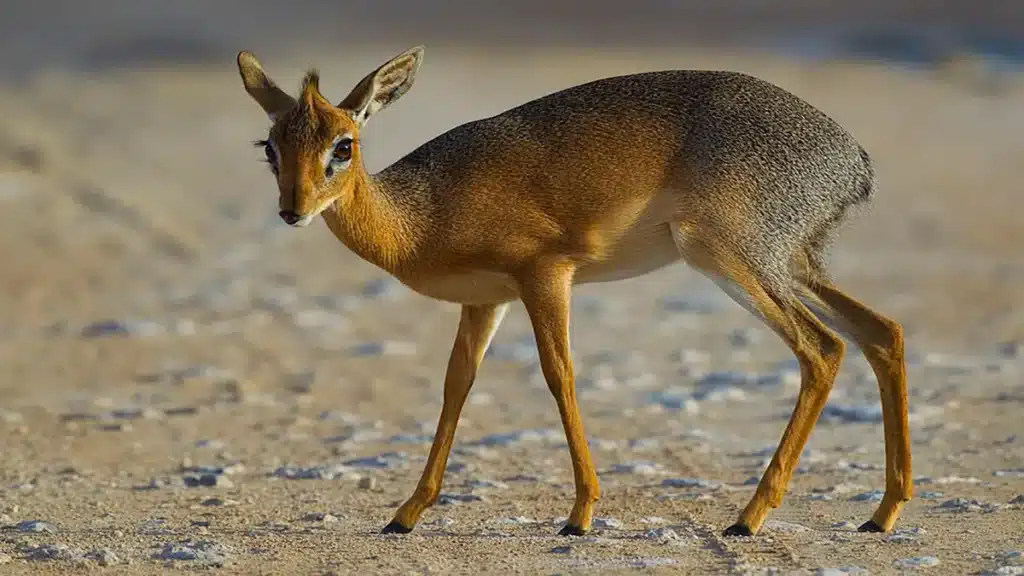
A dik-dik is a very small antelope. They are nocturnal, i.e., hunt in the dark and live in Africa. They have many predators and play an important part in the food chain. These animals also absorb most of the water their bodies need from the plants they chew. The lifespan of this wild creature is 5 to 10 years.
Because of its small size, this animal is vulnerable to many predators. Their only defense is their speed. They can run up to 26 mph. Also, they run in a zig-zagging pattern to try to escape. If a predator cannot mimic this zig-zagging pattern, it can give this small antelope the seconds it needs to get away.
21. Death’s Head Cockroach
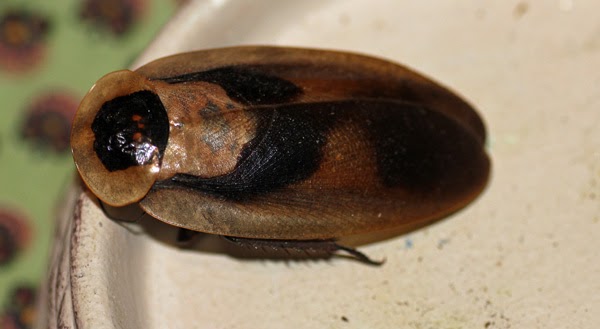
Death’s Head Cockroaches are the largest cockroaches found in North America. The Death’s Head Cockroach is a large winged insect native to Mexico, the West Indies, and Central America. It has also been introduced in Florida. Although they have black wings, they are not considered a flying cockroach species, though they use their wings to glide from higher places down to lower ones.
A Death’s Head Cockroach can live up to 1 year. Even though cockroaches are usually considered pests, the Death’s Head Cockroach is often kept as a pet, alone or with a few others in a group.
22. Death Adder

This snake species is native to eastern and southern Australia and Papua New Guinea. The species avoids desert areas but is plentiful in wooded or grassy areas like heath, woodland, forest, and grassland. Like most snake species, the adders cannot be seen much during the hottest time of the day.
The Death Adder has a triangular-shaped head like an arrow. They also have long fangs that can give a pretty nasty bite. The tail, however, is thin and has a short spine.
23. Dalmatian
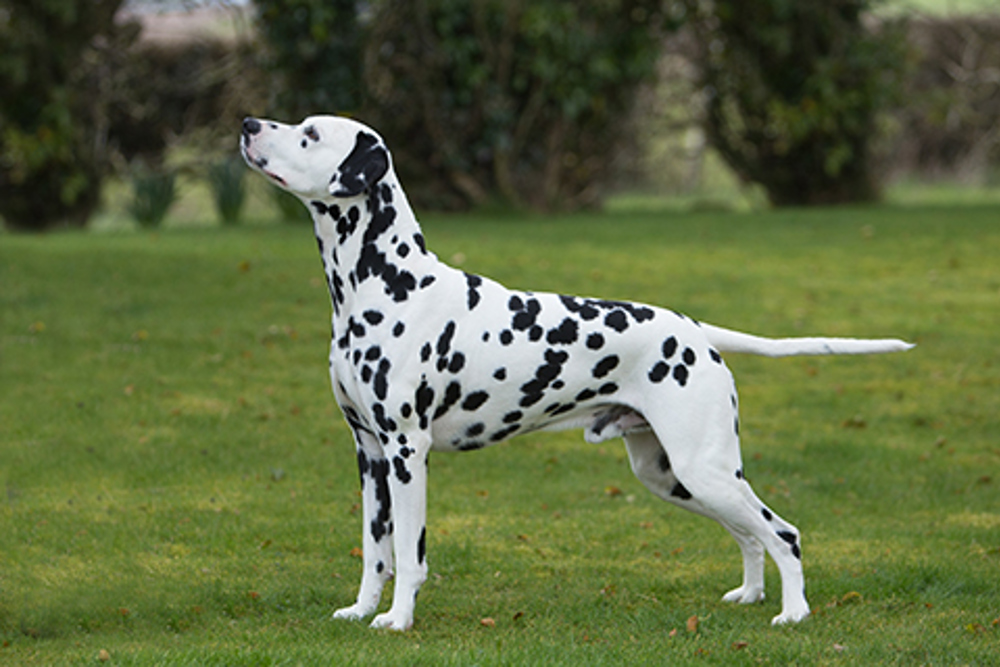
You would be wondering about the peculiar names of these dogs. This dog got its name from a coastal area in Austria called Dalmatia. Descended from pointers, Dalmatians served as coach dogs in 19th-century Europe. Coach dogs moved alongside horse-drawn carriages occupied by members of British noble families.
Fortunately, Dalmatians were known to get along well with horses! If you’re looking for a sweet dog with a sensitive temperament who loves to spend time with people, this dog is a great choice! Did you know Dalmatian puppies are born without spots and only get them after two weeks?
24. Damselfish
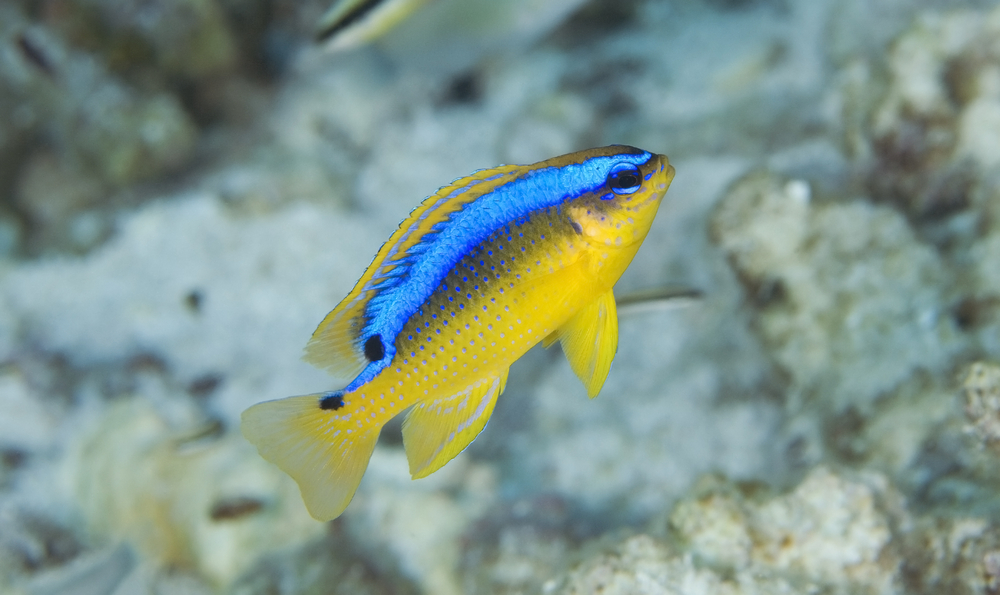
Some species within this family are territorial, which means they are very strict about their area in the habitat. And if they don’t get their way, they often become angry. This means it would be hard if they were in an aquarium since there would be many other fishes. But Damselfish are also known for their bright colors.
They come in various colors and patterns, including red, orange, yellow, blue, black, and white combinations. So, even despite this nonadjusting character, they are used in aquariums. In addition to this, they are incredibly hardy fish that can endure a range of conditions. Many species grow no larger than two or three inches, though the largest measure up to 15 inches in length.
25. Dromedary Camel

Dromedary camels live in desert conditions with a long dry season and a short rainy season. Even though dromedary camels were made to live in other climates, it was unsuccessful as they are sensitive to cold and humidity. Dromedary camels occupy arid regions of the Middle East through northern India and arid regions in Africa, most notably, the Sahara Desert.
You might know how camels adapt to live in dry and sandy deserts. Just like that, Dromedary camels have remarkable adaptations for their desert lifestyle. A double row of eyelashes protects Their eyes from blowing sand and dust. Also, at the onset of a sandstorm, these camels can close their nostrils to prevent sand from entering.
26. Drongo
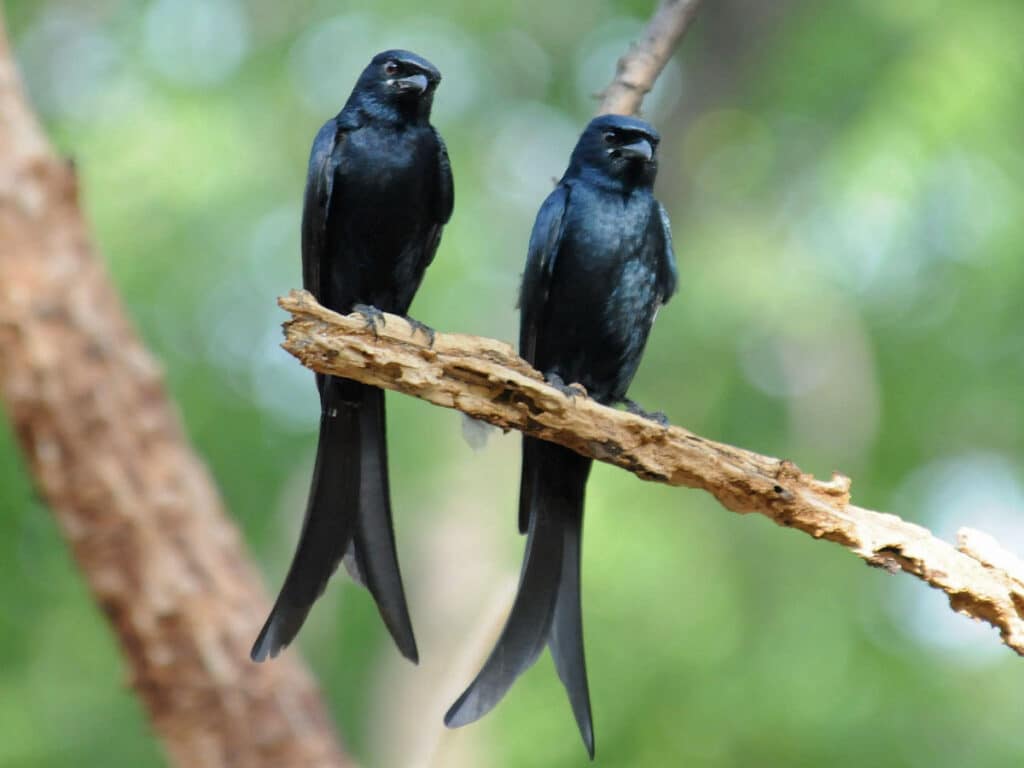
Drongos range from Africa to Central Asia, Australia, and western Pacific islands, inhabiting forests, open country, and gardens. They feed like flycatchers or shrikes, taking large insects and termites.
Their voices are loud mixtures of harsh and sweet sounds; some species, like the racket-tail, are good mimics. The nest is a flimsy basket that seems too small for the brooding bird. Most drongos are 18 to 63.5 cm (7 to 25 inches) long and glossy black, sometimes with white on the head or underparts (sexes alike); the eyes, in most, are fiery red. Some are crested or have head plumes, and the tail is usually long and forked.
27. Dotterel
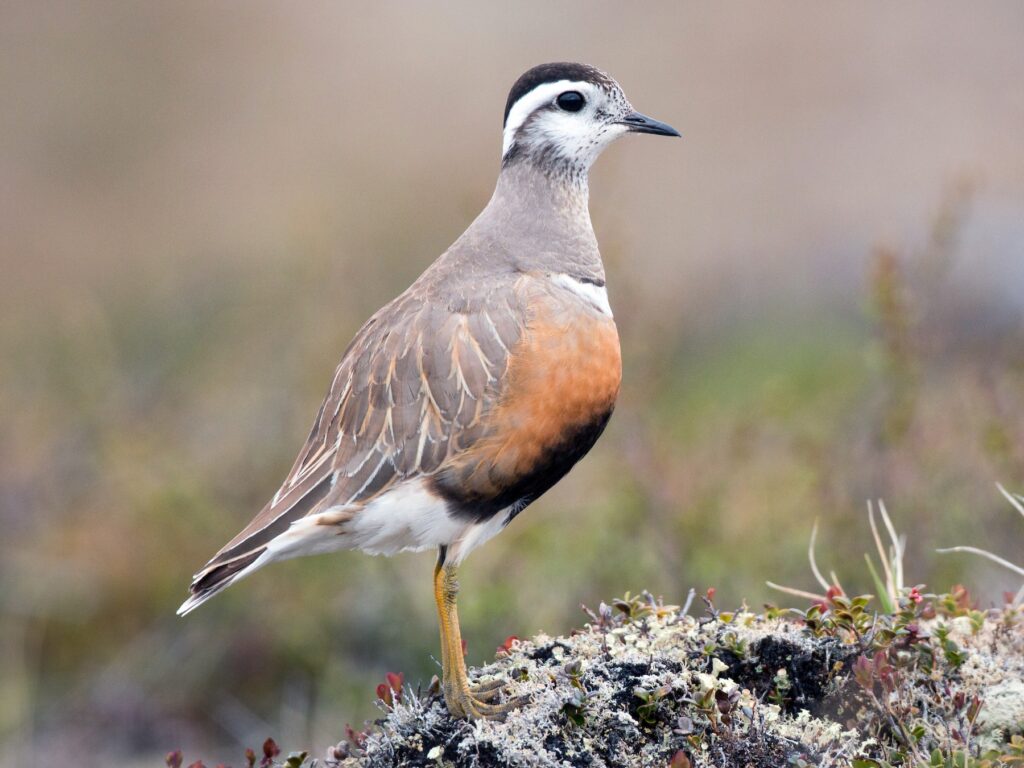
This medium-sized member of the plover family is unusual in that the adult female is brighter than the male – an indication of their role reversal in raising the young. Adults have largely gray-brown upperparts and bright chestnut bellies, with a white chest band, throat, and eyestripe. Their feathers can be Black, Brown, Cream or buff, Gray, Orange, White, leg color yellow, and black beaks with medium length and thickness.
On spring migration, they can be seen in groups called ‘trips’ at traditional stopping places, even though dotterel is found only on Scotland’s high tops in summer. They are best looked for on spring and autumn migration. Spring groups are usually seen at traditional stopping points, especially in Eastern England.
28. Double Doodle

The dog’s lineage combines Standard Poodle, Golden Retriever, and Labrador Retriever genetics. The Double Doodle got its name because it was a cross between two Poodle hybrids: the Golden Doodle, or Golden Retriever-Poodle, and the Labradoodle, or Labrador-Poodle.
Since they come from hunting dogs (thus the alternate name of North American Retriever), Double Doodles need more exercise than other less-active breeds. Long walks daily are very important to these dogs’ physical and mental well-being. They are intelligent, easy to train, and family-friendly. But they can also be too friendly and need careful dietary planning.
29. Douc
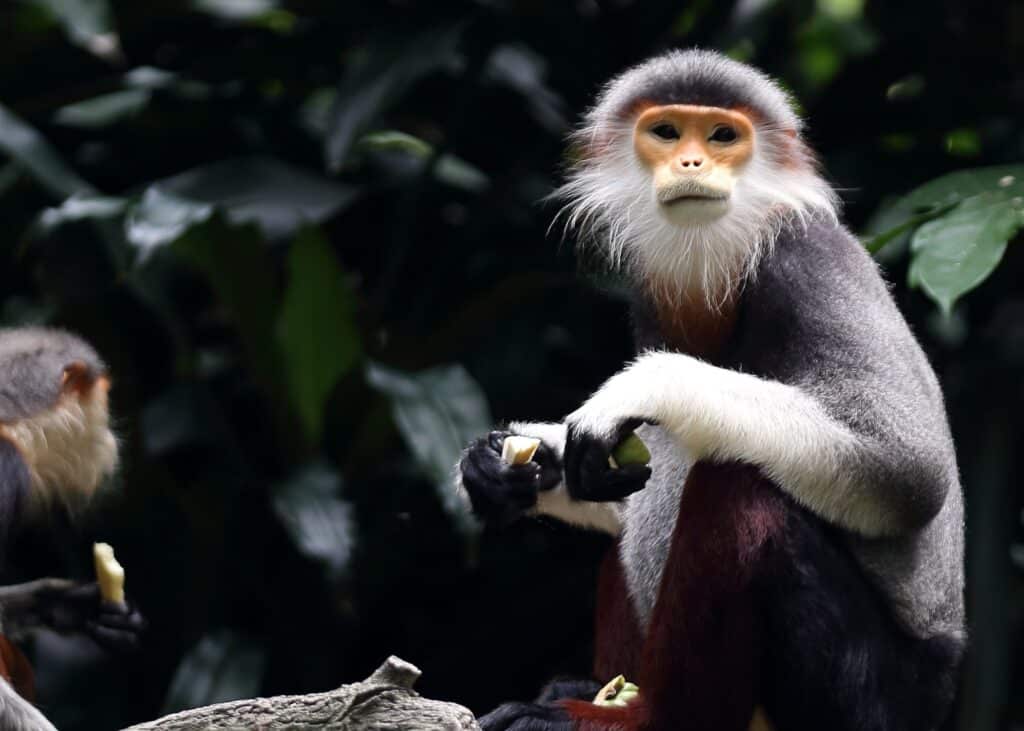
The Douc is an Old World Monkey from Indochina with the face of an ancient, bearded sage, as you might have noticed. Despite this, it is playful and full of life. It lives in the trees in groups that can be as small as four but as large as 50, though a group of 50 is very unusual. However, there are instances of doucs who travel alone. It is diurnal, which means it’s active during the day.
These monkeys live in the forests of Vietnam, Laos, and Cambodia. The red-shanked can be found in the lowlands and as high as 6000 feet in the mountains. Sadly, all three species of this primate are likely to go extinct due to hunting and deforestation.
30. Drumfish
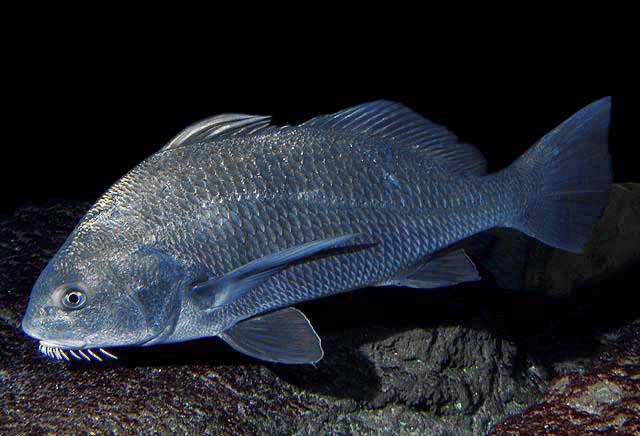
This fish is mostly found in saltwater seas and oceans, but a few species reside exclusively in freshwater rivers and lakes. They are a very popular type of fish for recreational and commercial purposes.
The name comes from the sound they make with their specialized muscles for communication. This croaking sound is produced by the vibration of the muscle against the swimming bladder, like the beating of a drum; hence, the name.
31. Desert Tortoise
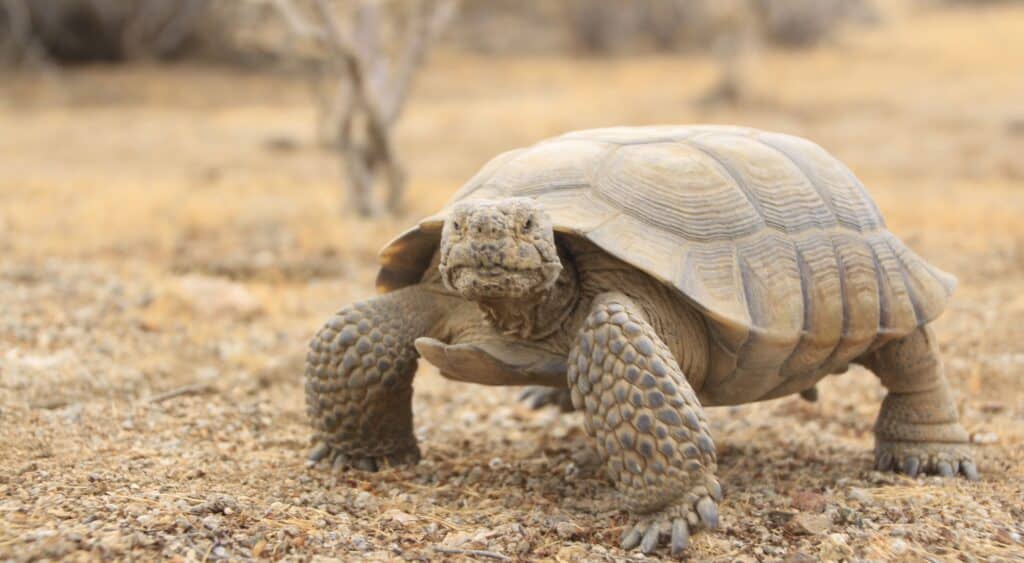
Desert tortoises are found in the United States and Mexico. These tortoises burrow tunnels so they can go underground to cool off when the desert heat gets too much. They adapt to the harsh conditions of the desert by being able to go around for a year without drinking water. The California desert tortoise eats grasses, flowers, and herbs in their hot, dry environment.
These reptiles have a behavior of digging grooves in the sand with their feet to catch rainwater to drink. They have strong front legs with sharp, sturdy nails that help them make a lot of progress when breaking through the dry ground. Their scaly skin protects them from the heavy digging work they do.
32. Dormouse

A lifestyle of hibernation has become this creature’s most well-known trait. You know, just sleeping around because of this, many see them as sleepy and lazy. But the opposite is also true. After emerging from its hibernation for the winter, the dormouse is an active and incredibly athletic creature.
You might know that the Dormouse was a minor character in the 1865 novel Alice’s Adventures in Wonderland by Lewis Carroll. At the Mad Hatter’s tea party, it sleeps among much of the commotion, sometimes waking to tell stories. This character was also mentioned in the 1967 song “White Rabbit” by the rock band Jefferson Airplane.
33. Draco Volans Lizard
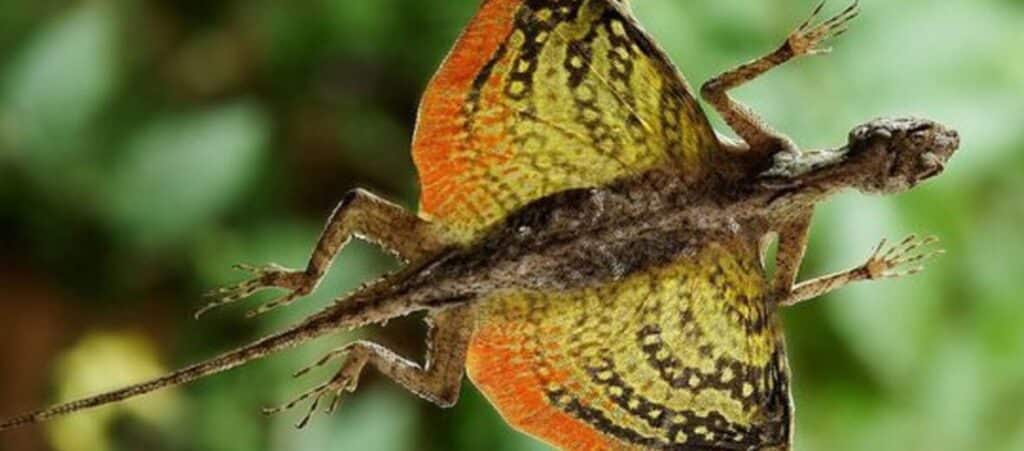
This lizard is known by its scientific name, Draco Volens, but it is often called the common flying dragon. And this might come as a surprise, but they don’t fly but glide. It uses membranes attached to its ribs to glide from place to place.
It is found in rainforests, where it can move easily from one tree to another. Besides its beauty and gliding ability, the flying dragon’s population is so robust that people think it’s venomous and won’t eat it. It’s not venomous at all. Well, that rumor turned out to be useful to them, right? Draco Volans can glide for about 26 feet, on average.
34. Devil’s Coach Horse Beetle
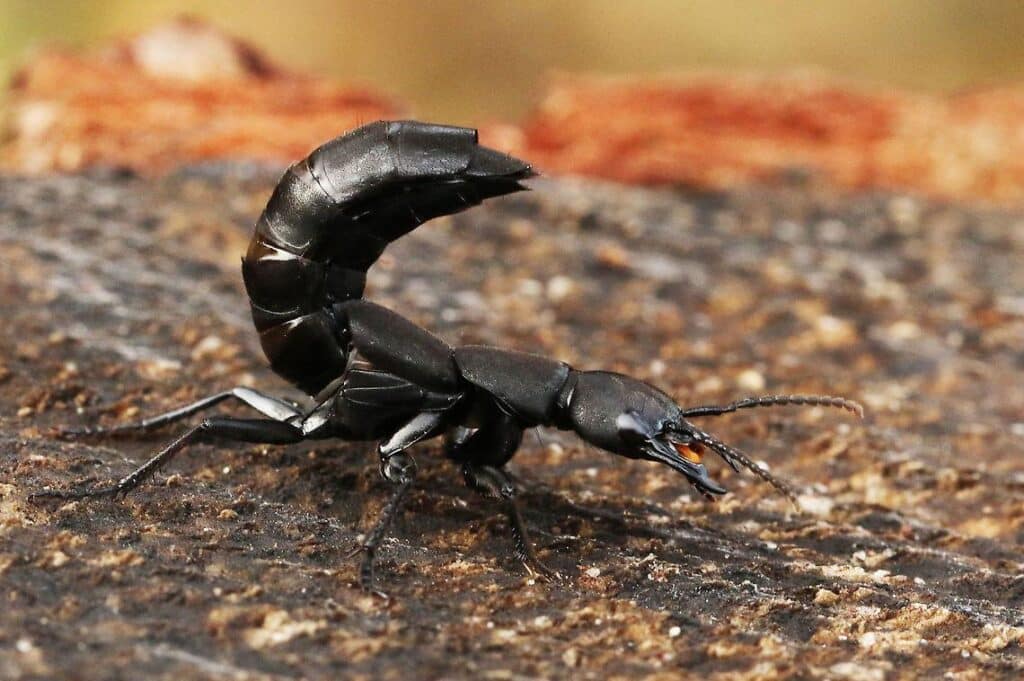
The Devil’s coach horse beetle has been associated unfairly with evil forces. In the Middle Ages, a superstition arose that the insect could curse a person just by pointing its tail in their direction. Scary right? While this is not true, this strange superstition has given rise to the unusual name of Devil’s Coach horse beetle.
The Devil’s coach horse beetle is preyed upon by some larger predators, such as birds and mammals. There are many interesting facts about their defensive behaviors. When threatened, they curl up their tail and emit a foul-smelling substance that may disgust even a determined predator.
35. Desert Rain Frog
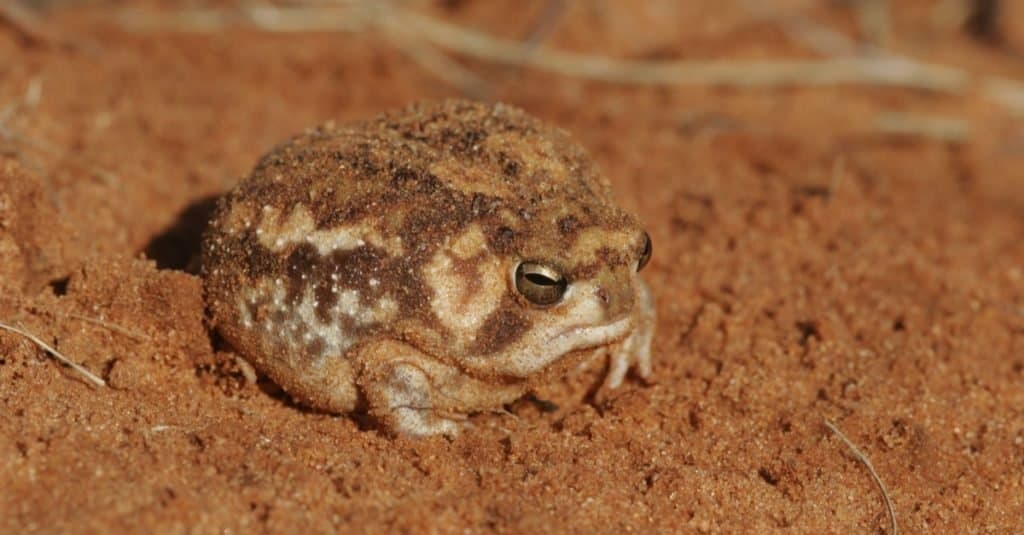
The desert rain frog is a bug-eyed wonder with a transparent layer of skin that exposes its organs. So much for secrets! The desert rain frog species are found in South Africa and Namibia. Its ecosystem is a narrow sandy shores between the sea and the dunes. These creatures are in danger due to habitat loss.
The Desert Rain Frog has a sound lifespan of up to 15 years. Ironically, these amphibians require a moist atmosphere. But living in an arid, dry region, they seek out foggy areas and keep their activity to cooler, after-dark activities.
36. Dusky Dolphin
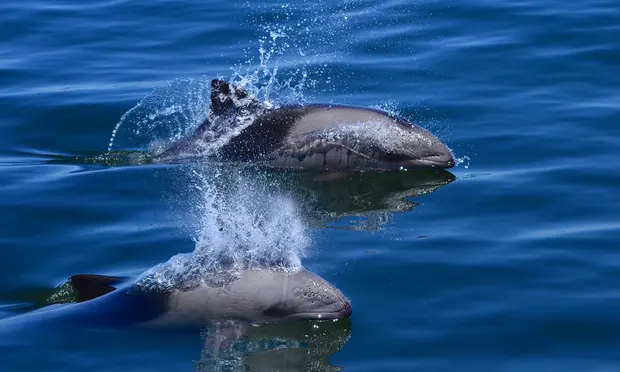
The Dusky Dolphin is a small dolphin species found inhabiting the cooler waters along continental shelves throughout the southern hemisphere. Sadly, despite being locally common in certain areas, Dusky Dolphin populations have declined throughout much of their natural range primarily due to threats caused by increasing levels of human activity.
The Dusky Dolphin is considered one of the most intelligent animal species in the world and even communicates with other individuals using their language, consisting of a series of whistles, clicks, and squeaks. The body shape of the Dusky Dolphin means that it is incredibly flexible and the most agile species of dolphin in the world.
37. Dark-eyed Junco

They’re in the sparrow family, and though they are smaller than other sparrows, they look the same. It has an extensive list of sub-species in various regions and a diverse range of colors. You would find them in various shades spread all over the country. They often reappear in the winter, so they are called the Snowbird. But that is not true for all its subspecies since some are found in all seasons.
The nest of the Dark-Eyed Junco is created by the female but guarded by a male. It comprises fine grass, weeds, leaves, and sometimes, hairs and feathers. You will have to do some work to find them because they are always well hidden. Either the nest is behind hanging grass, tucked away in shallow holes, or behind rocks.
38. Doberman Pinscher
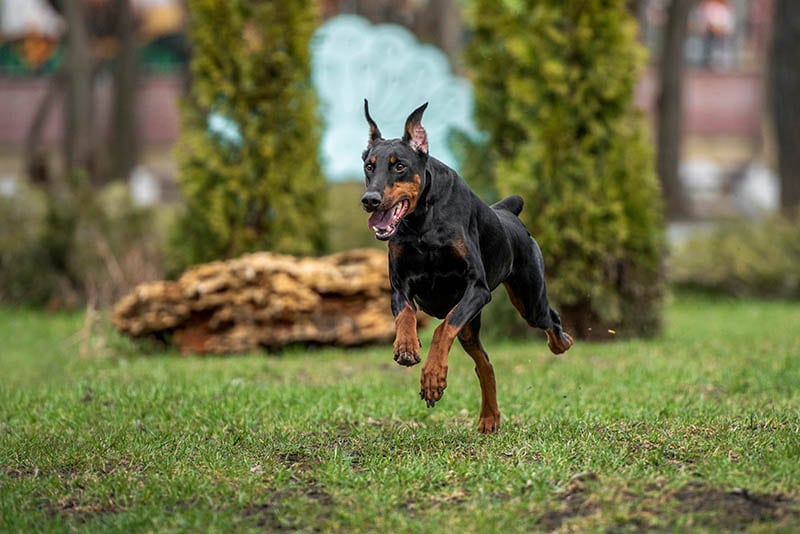
Pinschers are known to be extremely fearless and have been one of the finest protection dog breeds in the world, as you might already know. This breed of dog is known to have originated in Germany and was developed by Karl Friedrich Louis Dobermann in 1890. These dogs come in various colors: black, rust, brown, white, blue, and red.
The red Dobermans are especially considered to be attractive and amazing. The blue ones are a result of a special genetic pigmentation. These dogs also have a miniature version of the breed, the mini Doberman pinscher. However, the mini pinscher is a whole separate breed.
39. Deathwatch Beetle
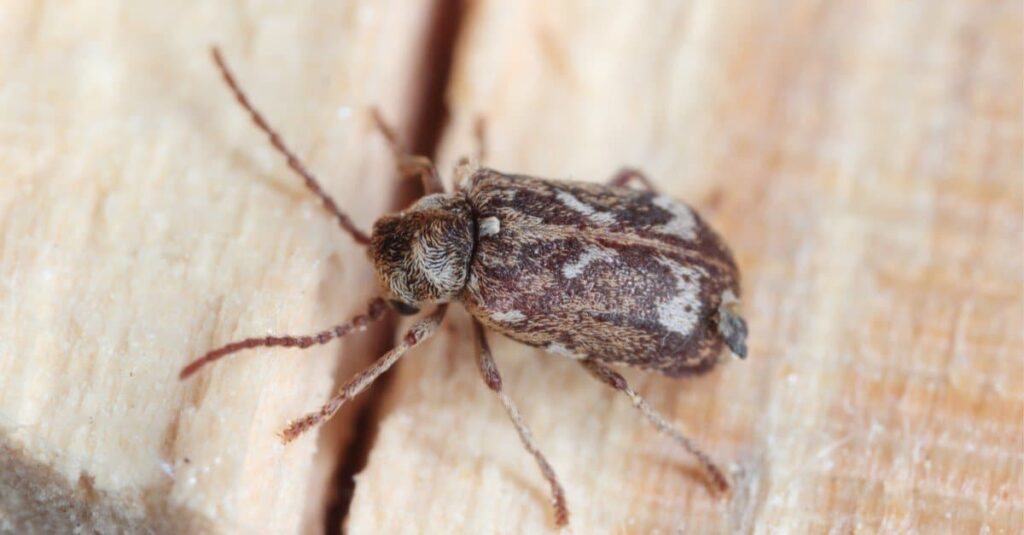
The deathwatch beetle is an insect that can infest wooden buildings by boring through them and become an annoying pest.
It can feed on all kinds of different wood, but old oak is one of its favorites. The deathwatch beetles were once considered signs of an ill omen and a portent of death because their rhythmic tapping sound mimics the ticking countdown of a watch. The male deathwatch is normally the one who initiates this ritual. He creates the sound by hitting his head against the wood.
40. Dobsonfly
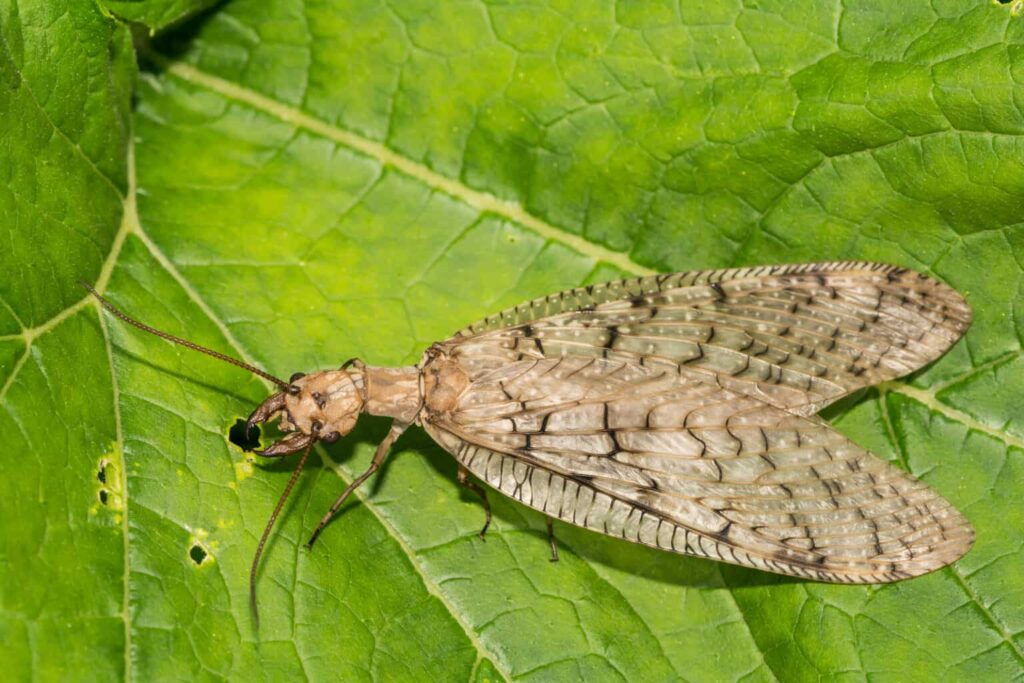
Insects in the subfamily to which dobsonflies belong can look a bit fearsome. But other than their painful bites that sometimes happen, they are not particularly dangerous. They’re among the largest aquatic insects in North America.
The larvae live in streams. Adults often sit near water bodies. Adult dobsonflies have such a short lifespan that there does not arise a need to feed. The larvae of dobsonflies are ferocious predators that feed on various aquatic insects and small invertebrates in the water.
They are famous for their memorable appearance. Their presence near a water body also suggests that it is not contaminated because they are very sensitive to pollution.
Final Thoughts
That was 40 animals that start with D! From loyal Dobermans to scary adders; this is a list of such awesome varieties of animals. Maybe some of them you have never heard of before. We are fortunate enough to live on a planet with such a sprawling variety of life.
From single-celled organisms to animals as large as the blue whale herself, from microbes that make us sneeze to dogs that protect us, the list is wonderful and yet to be studied. You can learn more about other members of the animal kingdom.
You know, the ones that start with maybe a g, if interested. And maybe if you are passionate enough, you can someday be the one to add new animal members to the list!

